The Samsung Galaxy S22+ pairs a refined design with top-notch internals, a reworked camera system and market-leading software support.
Should I Buy The Samsung Galaxy S22+?
Pros
- Long-term update support
- Tough but elegant design
- Superb display
Cons
- Cameras need tweaking
- Middling battery life
- A little pricey
Our Verdict
Price When Reviewed
- $999
On the surface, Samsung's latest S22+ simply looks like another incremental upgrade with a familiar face, but is there more to this middle-child of a Galaxy S phone than the expected annual hardware updates and design revisions?
While the 'S' branding within Samsung's Galaxy naming convention has always been tied to the company's flagship Android phones, the '+' suffix is a relatively recent addition to the lineage whose function continues to change over time.
The most obvious difference between the S22 and the S22+ – as is true of previous generations – is the larger size that the Plus model sports; not to mention the extra benefits that its additional volume brings. Moving from the standard to the Plus not only means a bigger screen but a larger battery too.
With the extension of an Ultra-branded entry within each year's Galaxy S line, the Plus model also serves as something of a melting pot; melding the more modest hardware of the base S phone with touches of the more premium and advanced features that would otherwise be exclusive to the Ultra.
As such, while the Galaxy S22+ may not look like the most exciting entry in this year's flagship Samsung line-up, it's arguably the phone with the broadest appeal, in terms of size, features and performance.
Design & Build
- Stylish and slim
- Improved durability
- Gorilla Glass Victus+ & Armour Aluminium
While 2020's Galaxy S20 lineup was a little bland to look at, last year's S21 series brought more defined and distinctive hardware to the table (helped by the use of an eye-catching 'Phantom Violet' finish as the range's signature colourway). The S22 and S22+ firmly adapt the familiar footprint left by 2021's Galaxy S phones, including their recognisable 'contour cut' camera bump.
Apple's return to slab-sided industrial design (initially with 2020's iPhone 12 series) seems to have rubbed off on its competition too; resulting in devices like Vivo's V23 and Oppo's latest Reno 7 series. The Galaxy S22+ (and S22) lands somewhere between the forms of the more rounded S21 line and straight-edged iPhone 13, sporting a hybrid design that offers more grip than the former but is more comfortable to clutch than the latter.
The polished frame running the phone's edge is – for the first time on a Galaxy S phone – hewn from Armour Aluminium (or 'Armor Aluminum', for those Stateside), Samsung's upgraded aluminium-based alloy, first seen on 2021's Galaxy Z Flip 3 and Z Fold 3 foldables. In Samsung's words, it claims to be "the strongest aluminum used in modern smartphones."
While I can only speak to the S22+'s apparent excellent build quality in a relatively inert state, those willing to subject their test devices to more challenging scenarios have confirmed Samsung's claims; with the enhanced durability promised by this new material choice proving more than just marketing spiel.
Stylistically, the degree to which the contrast between the polished metal frame and the diffused glass back (just as with last year's S series) varies, depends on the colourway you opt for. The Pink Gold model most prominently pictured in this review features a colour-matched frame (as is the case with all of the standard finishes), while the four Samsung.com-exclusive offerings sport contrasting frame and glass treatments; including a more reserved riff on that signature Phantom Violet from last year.
Likely as a way of reflecting the S22 series' existence as a refinement of their direct predecessors, this year's phones are being served up with a more muted palette and while less eye-catching than much of the competition, the options on the table all feel considered and should work with an array of styles and aesthetics.
Display & Audio
- Smaller 6.6in panel, compared to predecessor
- Beautiful 120Hz AMOLED visuals
- Excellent outdoor brightness
- Clear but flat stereo speakers
A touch of post-launch controversy shed a little light on an apparent upgrade to the display on the S22+ (and base S22), compared to its predecessor – a change which Samsung has since had to step in and clarify.
Despite what some official spec sheets still say, the S22 and S22+ both sport high refresh rate displays with a variable range of 120Hz down to 48Hz – just like last year's models. Spec sheets claiming both phones can drop to 10Hz aren't technically wrong, but the panel used bottoms out at 48Hz.
At this size, the 19.5:9 aspect ratio makes one-handed use when the interface is at full scale a little too tricky to pull off regularly and comfortably, however, the software's dedicated one-handed mode is, thankfully, on-hand to make moving around the interface with a single mitt markedly easier; activated with a simple swipe down from the bottom of the display.
As for the visuals themselves, Samsung has long offered up superb screens on its Galaxy S phones and that hasn't changed with the S22 range. The "Dynamic AMOLED 2X" panel on the Plus may only sport Full HD+ resolution (giving this phone the lowest pixel density amidst the trio of debut S22 phones), but it still delivers a crisp image that should satiate most users.
The phone defaults to a 'Vivid' colour profile, which includes a colour temperature slider for fine-grain tweaking, however, there's also a more modest 'Natural' profile if you're less of a fan of Samsung's preference towards punchy visuals.
While there's little 'new' on offer from the panel used by the S22+, it does boast a higher peak brightness (1750nits) than its predecessor and that proved its worth when in use against the winter sun. Side by side with the Pixel 6 Pro, the difference isn't quite night and day, but the Galaxy was the clear winner; being able to deliver a brighter image and better colours, without compromise.
The phone's 7.6mm frame doesn't leave room for a conventional 3.5mm headphone jack but you can connect through a USB-C adapter or the phone's Bluetooth 5.2 connectivity if you prefer to go wireless.
The S22+'s slim body still manages to offer up stereo speakers, which sport a high/low bias between the earpiece and down-firing grille, respectively. Meanwhile, the phone's overall output is clear but a little flat.
Software & Features
- Great multitasking toolset
- Superb long-term update support
- Debut of One UI 4.1 (atop Android 12)
- Some duplicate apps out of box (that can be uninstalled/disabled)
While One UI 4 was the first iteration of Samsung's mobile user experience to capitalise on the additions that the underlying Android 12 update brought to the table, the S22+ launches with the revised One UI 4.1 (again, atop Android 12); complete with numerous small but helpful tweaks and upgrades.
If you're already familiar with One UI, the look and feel of the user experience on the S22+ shouldn't come as anything of a shock. You'll find familiar icon designs and colour palettes, the Galaxy Store alongside the Google Play Store and menus – from the Quick Settings shade to the full settings menu – that all feel distinctly different to stock Android while remaining consistent with one another.
You can have the Google Discover page or Samsung's own 'Free' feed to the left of your home screen, there's a dedicated theme store that's packed with both first and third-party offerings to instantly change up the look of your Galaxy's interface, and then there are extras like Dual Messenger: letting you run two instances of the same messaging app, tied to two different accounts, simultaneously.
The long-standing Edge Panels make getting to your favourite apps (and contacts) easy from practically anywhere within the UI and being able to save split-screen configurations, as well as launching apps in floating windows with a simple drag-and-drop action make for a great multitasking experience; particularly on the S22+'s nicely-sized screen.
This move not only means Samsung's top phones out-perform Google in terms of long-term software support but also adds value to devices like the S22+ in an area that most rival Android phone makers can't (or at least don't) compete on.
Performance
- One of the first phones to sport a 4nm Exynos 2200/Snapdragon 8 Gen 1
- Performance gains not as big as expected compared to S21+
- Exynos Xclipse 920 first mobile GPU w/ ray tracing
- Lacks graphical optimisation for some games
While companies like Motorola and Xiaomi may have beaten Samsung to the punch by releasing phones running on cutting-edge 4nm silicon ahead of the S22 range, this newest Galaxy series is likely the most widely available set of devices to sport such hardware and thus, for many, will be their first taste of these new chips' capabilities.
As ever, the market you buy your Galaxy S22 entry in will affect which chipset resides at its core. Across the UK and Europe, you'll find the Exynos 2200-powered variant (which is what I've been testing), while users in markets like the US and elsewhere can expect the latest Snapdragon 8 Gen 1 instead.
However, in artificial benchmarks, the Exynos 2200 doesn't appear to pull away from its predecessor by all that much. Ahead of launch, leaked benchmarks suggested that this latest Exynos would be comparable (or only marginally weaker) to the new Snapdragon 8 Gen 1 with regards to raw compute power but the gap seems a lot slimmer than anticipated, versus last year's chip too.
Graphical performance looks comparatively stronger, though note that the low scores for the Oppo Find X5 Pro and Pixel 6 Pro are distorted by their more demanding, higher resolution displays.
Numbers aside, the Xclipse 920 used here is the first mobile GPU to offer hardware-accelerated ray-tracing on mobile, something not possible on Galaxy S22 phones with the Snapdragon 8 Gen 1.
The caveat is that, at the time of writing, no mobile games openly support ray-tracing and even if they did, Samsung is unlikely to instigate support for one variant of its latest flagship, while the other remains unable to leverage the technology.
When it comes to gaming, the Exynos-powered S22+ had no problem running multiple rounds of demanding titles, like Call of Duty: Mobile, with minimal heat build-up, even after long play sessions. In the case of CoD specifically though, despite the phone's high-end specs, only low-quality visual settings were available from within the game's menu.
Presumably a symptom of an apparent lack of optimisation for Samsung's Xclipse GPU, this caveat hurts what should otherwise be a confident gaming phone, even if it isn't quite able to compete with dedicated devices in areas like high refresh and touch sampling rates.
Battery
- Smaller battery than S21+
- Supports up to 45W fast charging
- No power adapter in-box
While a more manageable display size and a thinner, more elegant design are welcome alterations between last year's and this year's Plus, the smaller footprint does also result in a smaller battery, moving from a 4800mAh cell in the S21+ down to a 4500mAh offering in this year's S22+.
In testing, PCMark's battery benchmark highlights the effects of this capacity reduction (as seen in the results above), while real-world screen-on time ranged from around 5.5 to 6 hours of use per charge. The S22+'s battery life is distinctly middle of the road, meaning most should be able to use the phone for a day without concern that it'll drop dead before bedtime.
While Samsung doesn't supply a power adapter in-box anymore, and I wasn't able to test the official 45W charger (priced at £44/US$49.99), I tested the S22+ with a generic USB-C 65W PD charger, which refilled the battery to 18% in 15 minutes, 37% in half an hour, and was fully charged in 90 minutes flat.
Camera
- Low light and selfie quality need work
- 10Mp central hole-punch selfie camera
- 50Mp main sensor w/ OIS, 12Mp ultrawide, 10Mp telephoto w/ OIS
Amidst the slew of expected upgrades and improvements, perhaps one of the most exciting and intriguing changes to the S22+ is its camera setup.
While the S20+ and S21+ both relied on a 12Mp main, 12Mp ultrawide, and a somewhat deceptive 64Mp 'telephoto' sensor, Samsung has finally seen fit to give this generation of Plus a true 3x optical zoom snapper, instead. What's more, there's a new 50Mp primary sensor doing most of the heavy lifting, photographically speaking.
Colours carry a signature Samsung 'pop' but the science used is more nuanced and subtle than previous iterations of the brand's image processing, making for better and more competitive results against the likes of Google's and Apple's latest and greatest; in natural light at least.
That said, colours do appear to skew a little on the warmer side, with softness and grain also appearing in darker areas of frame to an unexpected (although still acceptable) degree, for a phone of this calibre.
One smart addition to this mode that's included across the entirety of the S22 range, however, is Detail Enhancer: an innocuous icon within the camera app's viewfinder that, when activated, pairs a native 50Mp shot with additional image processing, similar to how the phone handles pixel binning and HDR composition. The result is an impressively high-detail shot that offers better consistency with the main camera's standard 12Mp output, in terms of colour, contrast, noise suppression and dynamic range.
Unfortunately, low light and night mode results proved particularly disappointing on the S22+, with far less detail and sharpness compared to the previous generation of Galaxy S phones.
There's also a degree of colour inconsistency between the sensors (see the camera sample with the orange coat through the ultrawide and the main for a great example) that wasn't present on last year's S models.
Colour, contrast and dynamic range were also lacking when shooting selfies, even if the underlying 10Mp front-facing camera hardware doesn't appear to be any different to last generation's offering.
Hopefully, these shortcomings can be patched in a subsequent software update, but at launch, they're way behind where they should be, based on the bar Samsung's already set itself, not to mention the competition.
Price & Availability
In most markets, (as of 25 February) the Galaxy S22+ is on sale now, both direct from Samsung's own site (US, UK, Spain, France) as well as other retailers, including Best Buy in the States and Amazon in multiple markets (US, UK, Spain, France). However, fans in some regions, including the UK, will have to wait a little longer for both the S22 and S22+, which will arrive in stores on 11 March.
The S22+ maintains its predecessor's pricing (at least in the US and UK), starting at £949/$999 for the base 128GB storage SKU and moving up to £999/$1,049 for the 256GB variant. European pricing is marginally higher than last year, coming in at €1,079 and €1,149 for the two storage SKUs, respectively.
While that 6.6in display is arguably the sweet-spot of the range, particularly for those prone to enjoying media on the go without wanting a true 'phablet' in their bag/pocket, as with last year's S21 range, there's a not-insignificant price hike when moving from the base S22 (which starts at £769/$799/€879) up to the S22+. Whether the Plus's larger display and battery, Wi-Fi 6E and UWB support justify the additional £180/$200/€200 really comes down to your needs and your wallet.
When it comes to pricing, the most obviously fly in the S22+'s ointment is Apple's iPhone 13 Pro, which costs the same and yet delivers superior cameras, battery life and performance. What's more, depending on the market you're in, there are also Android-based contenders, like Oppo's 8 Gen 1-powered Find X5 Pro, which is the best the company offers right now and only costs a fraction more than the middle child of the S22 family.
Verdict
When it comes to building flagship phones, some things come effortlessly to Samsung: killer displays, elegant design paired with superb build quality, and intuitive, feature-packed software. As such, you know you're not going to be let down when you pick up a Galaxy S phone.
As highlighted by the likes of the ill-fated Galaxy Note 7 and, to a lesser extent, the camera system on the Galaxy S20 Ultra, the South Korean company doesn't always get things quite right, however, and the S22+ undoubtedly has its cracks.
Battery life is fine, but it lags behind the competition, while the promise of improved fast charging fails to deliver any meaningful benefit to users.
The new camera system clearly has potential too, but imaging issues already addressed on last year's S series seem to have inexplicably re-emerged on the S22+, highlighting problem areas that users shouldn't have to deal with on a device at this price point.
The silver lining is Samsung's approach to software, both in its promise of Google-beating long-term OS and security updates that extend the lifespan of devices like the Galaxy S22+ beyond any of their Android-based competitors and the company's willingness to address and improve its devices in a transparent and timely fashion.
Head over to our Best Samsung Galaxy phones chart to see where we think the S22+ slots in amidst the company's current lineup.
Specs
- 6.6in Full HD+ Dynamic AMOLED 2X 48Hz-120Hz HDR10+ display
- Ultrasonic in-display fingerprint sensor
- Gorilla Glass Victus+ (front & back)
- Armour Aluminium frame
- 4nm Snapdragon 8 Gen 1/Samsung Exynos 2200 SoC (market dependant)
- 8GB RAM
- 128GB or 256GB non-expandable storage
- 50Mp main camera w/ OIS
- 12Mp ultrawide camera
- 10Mp 3x optical zoom telephoto camera w/ OIS (up to 30x 'Space Zoom')
- 10Mp front-facing camera
- Stereo speakers
- Android 12 w/ One UI 4.1
- Samsung DeX support
- IP68 dust/water resistance
- NFC
- 5G
- WiFi 6E
- UWB
- Bluetooth 5.2
- 4500mAh battery
- 45W fast charging (USB-IF compliant)
- 15W wireless charging
- Reverse wireless charging
- 75.8mm x 157.4mm x 7.6mm
- 196 grams
- Launch colours: Phantom Black, Phantom White, Green, Pink Gold
- Samsung.com-exclusive colours: Graphite, Cream, Sky Blue, Violet


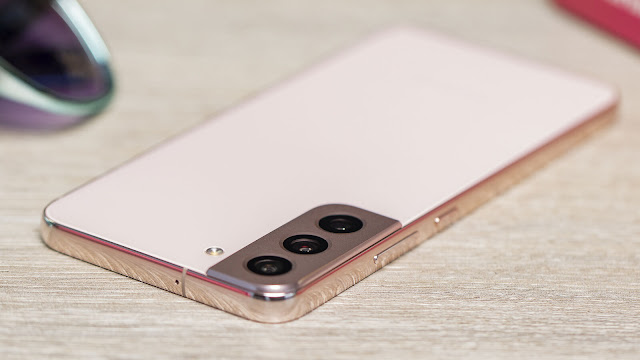

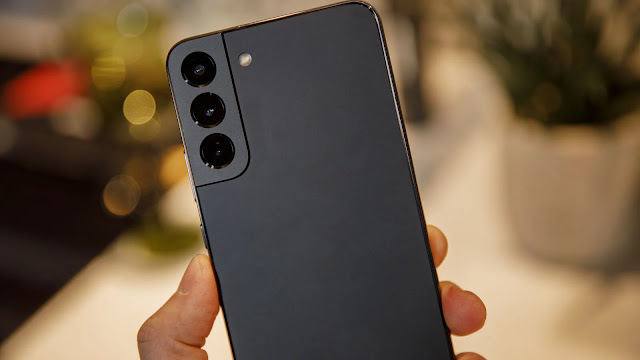

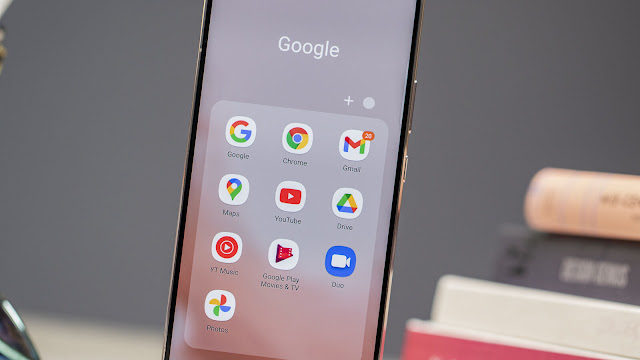




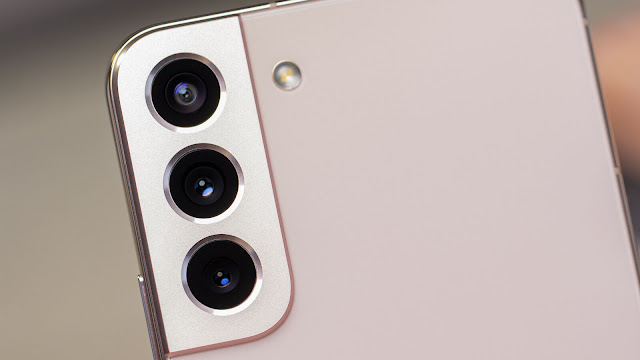












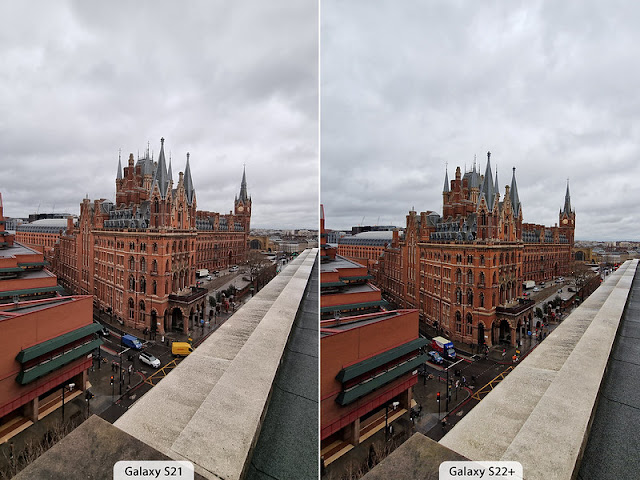














0 comments:
Post a Comment